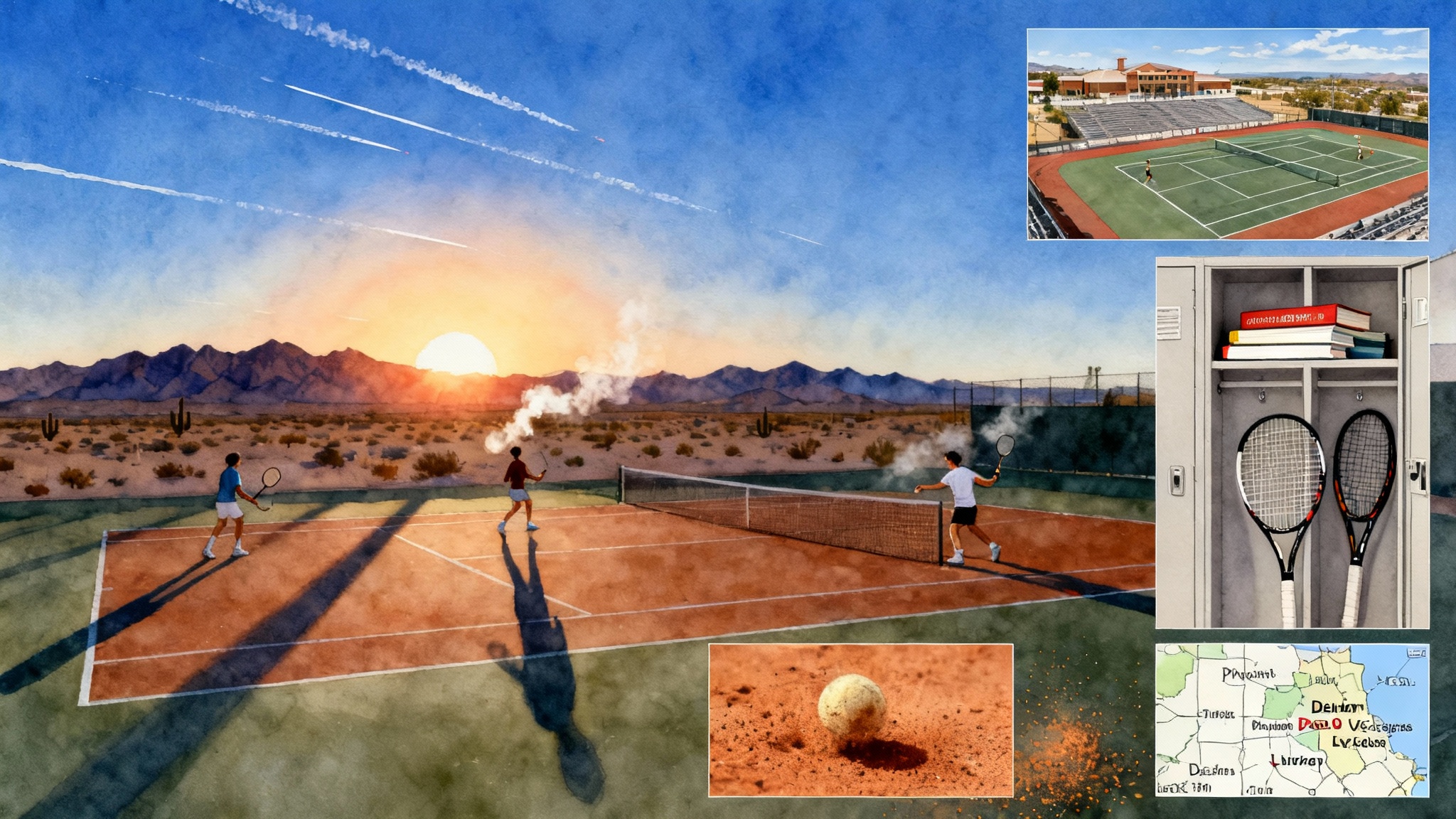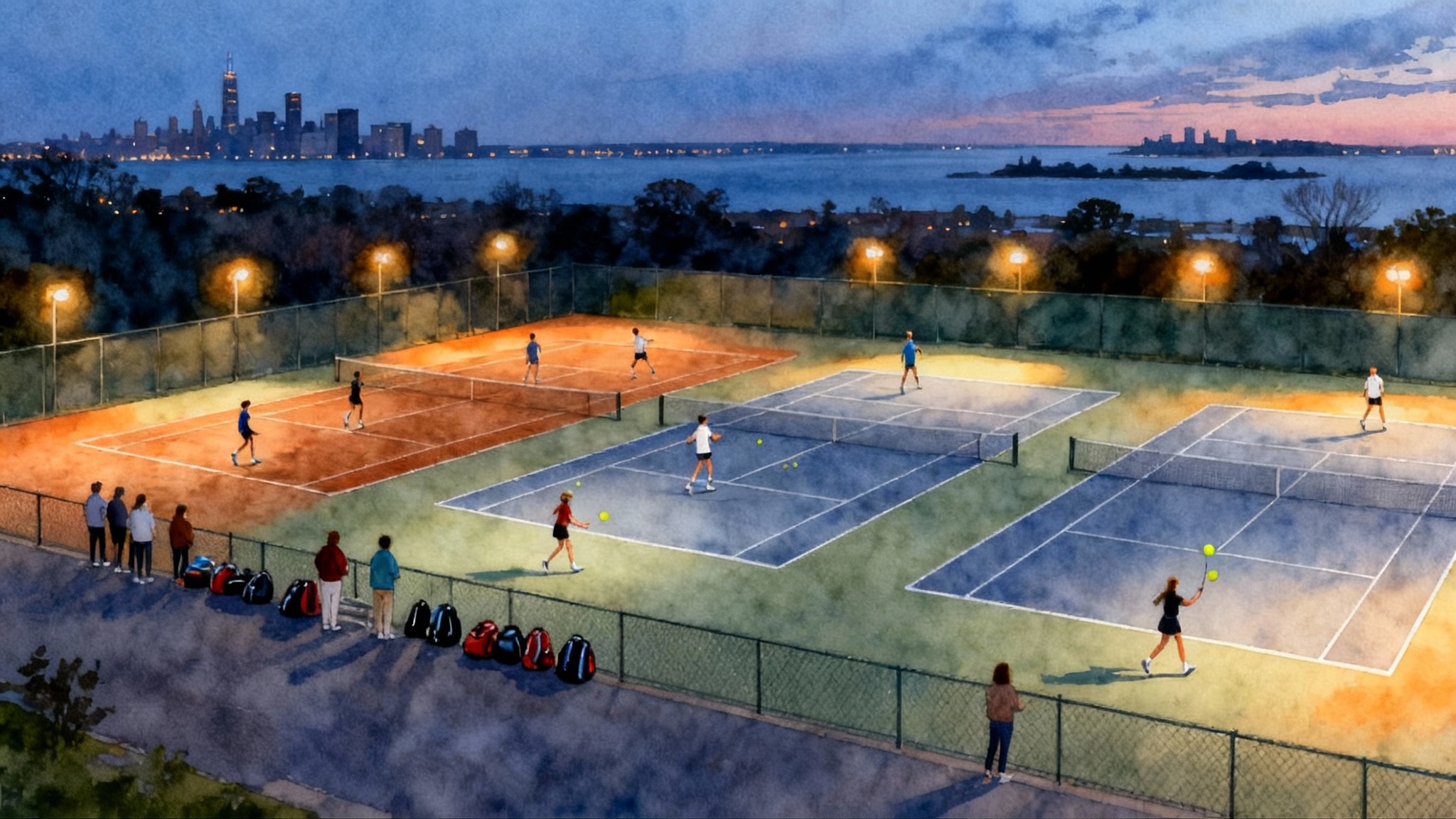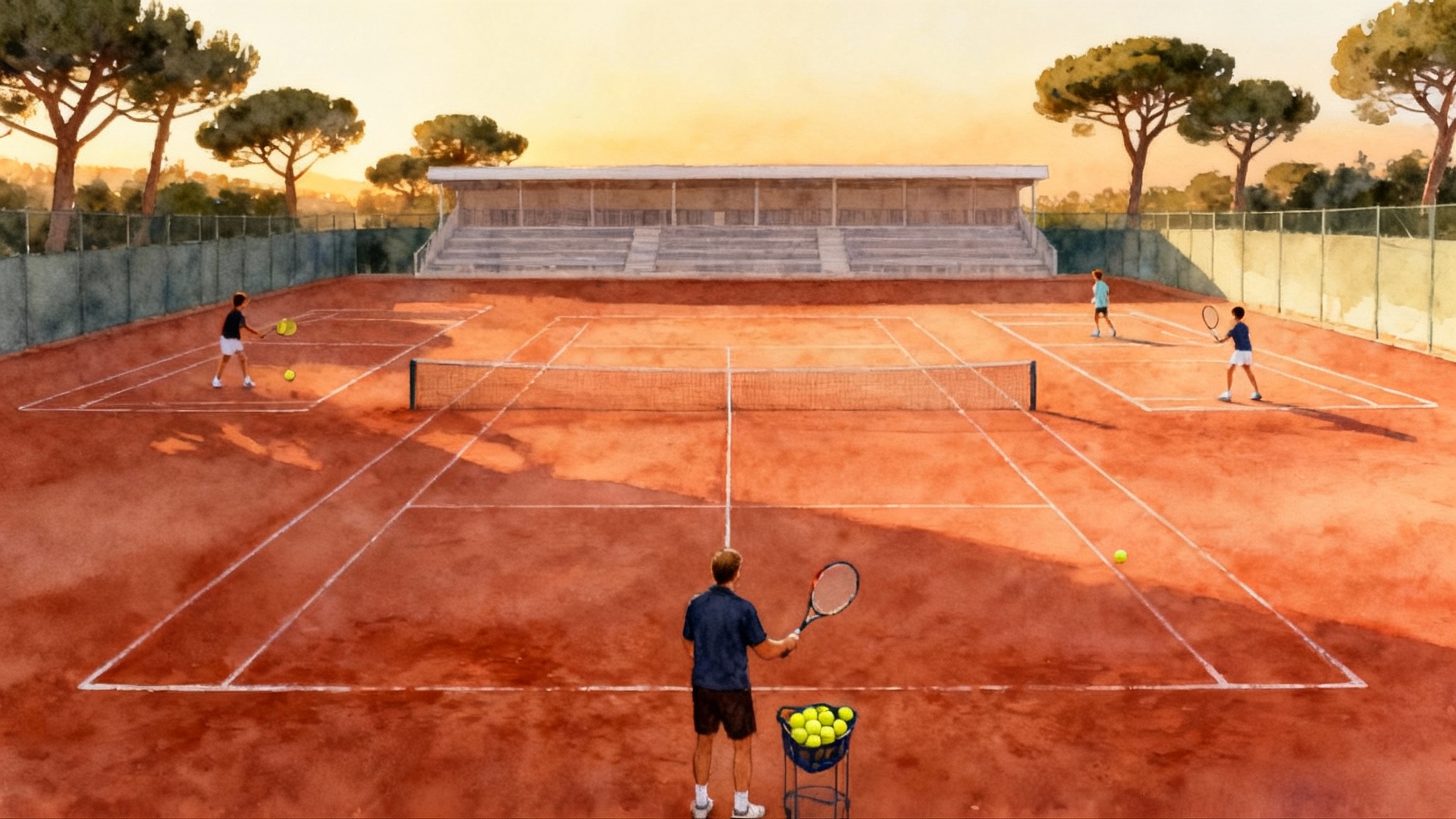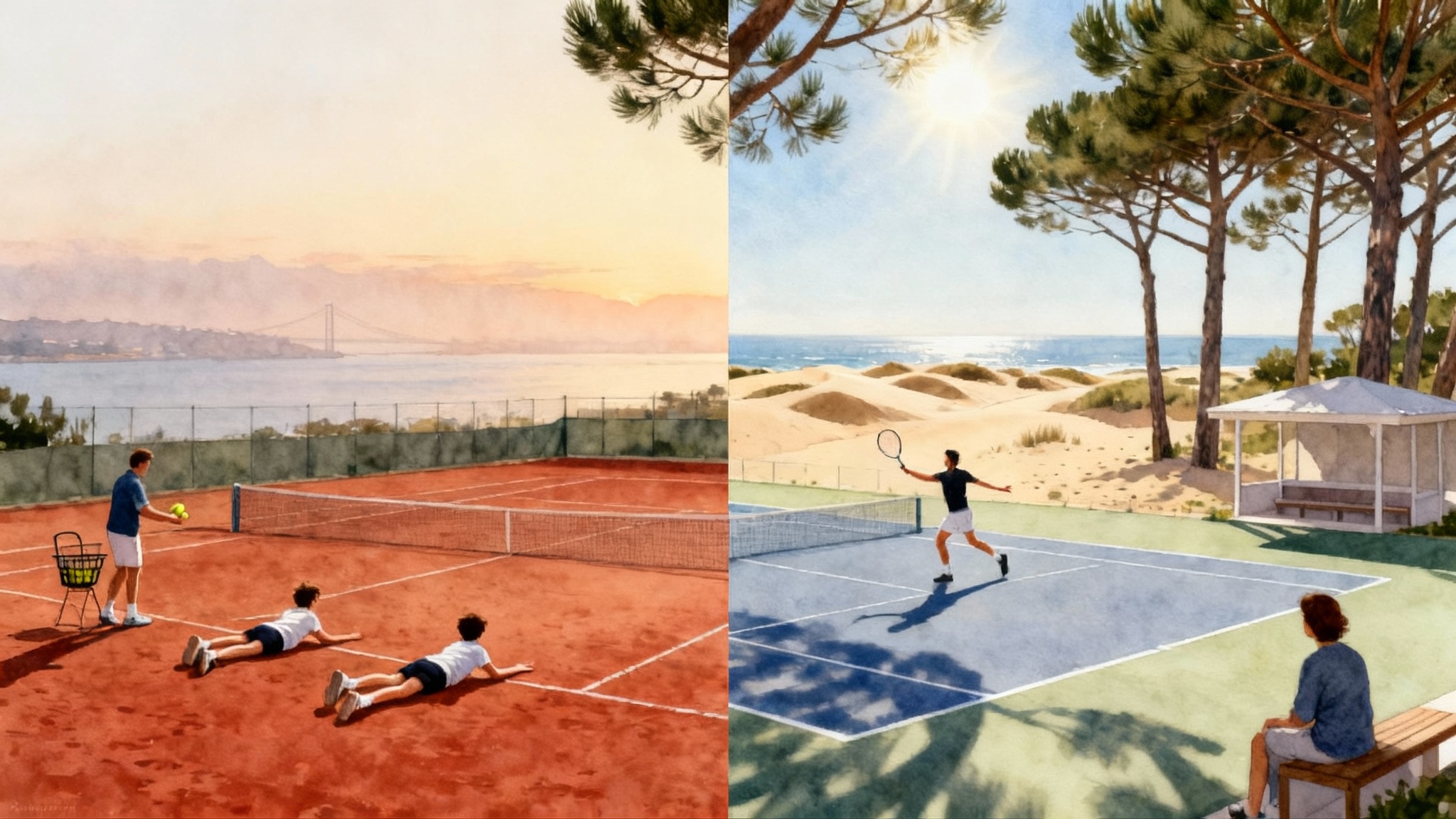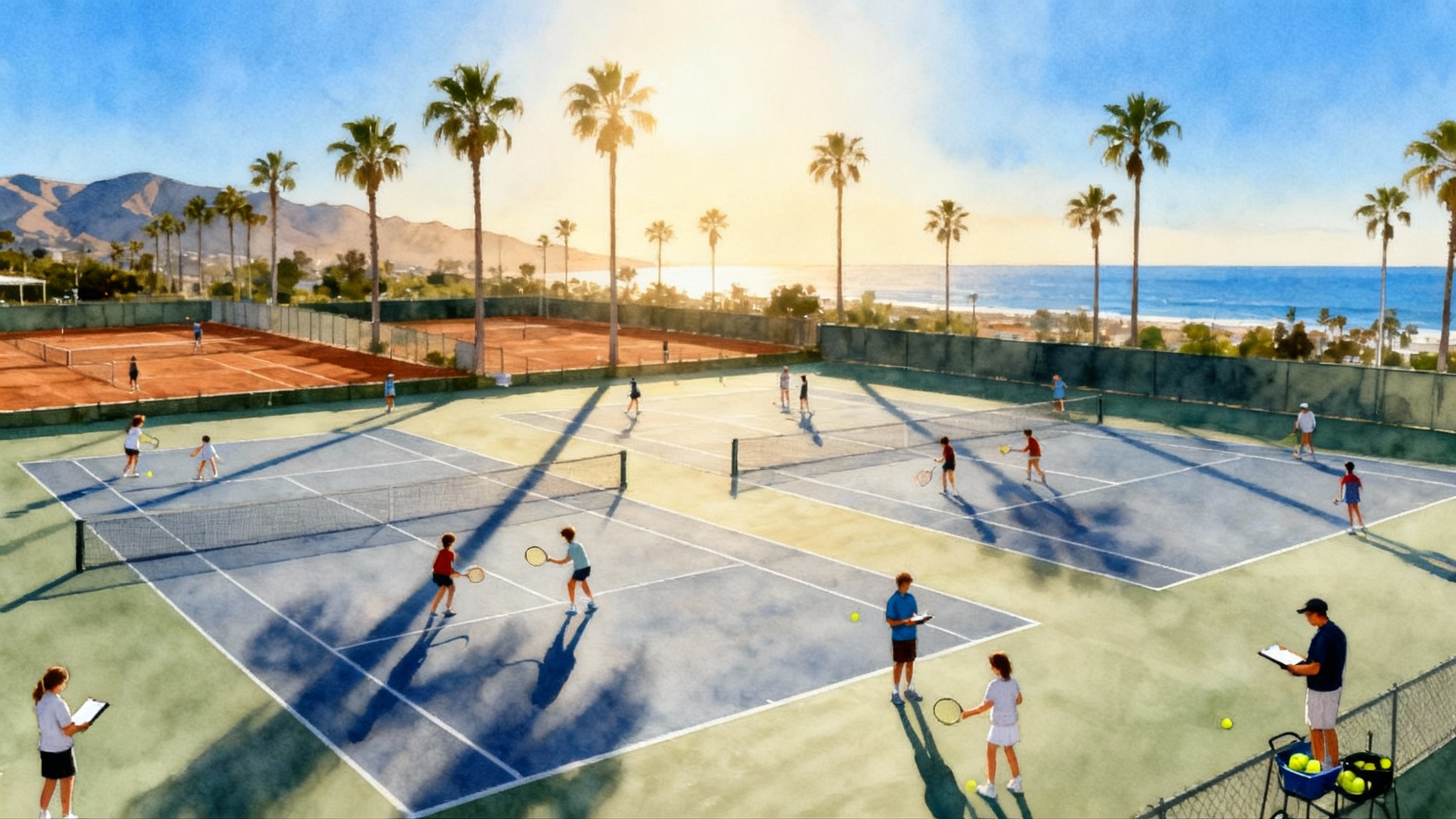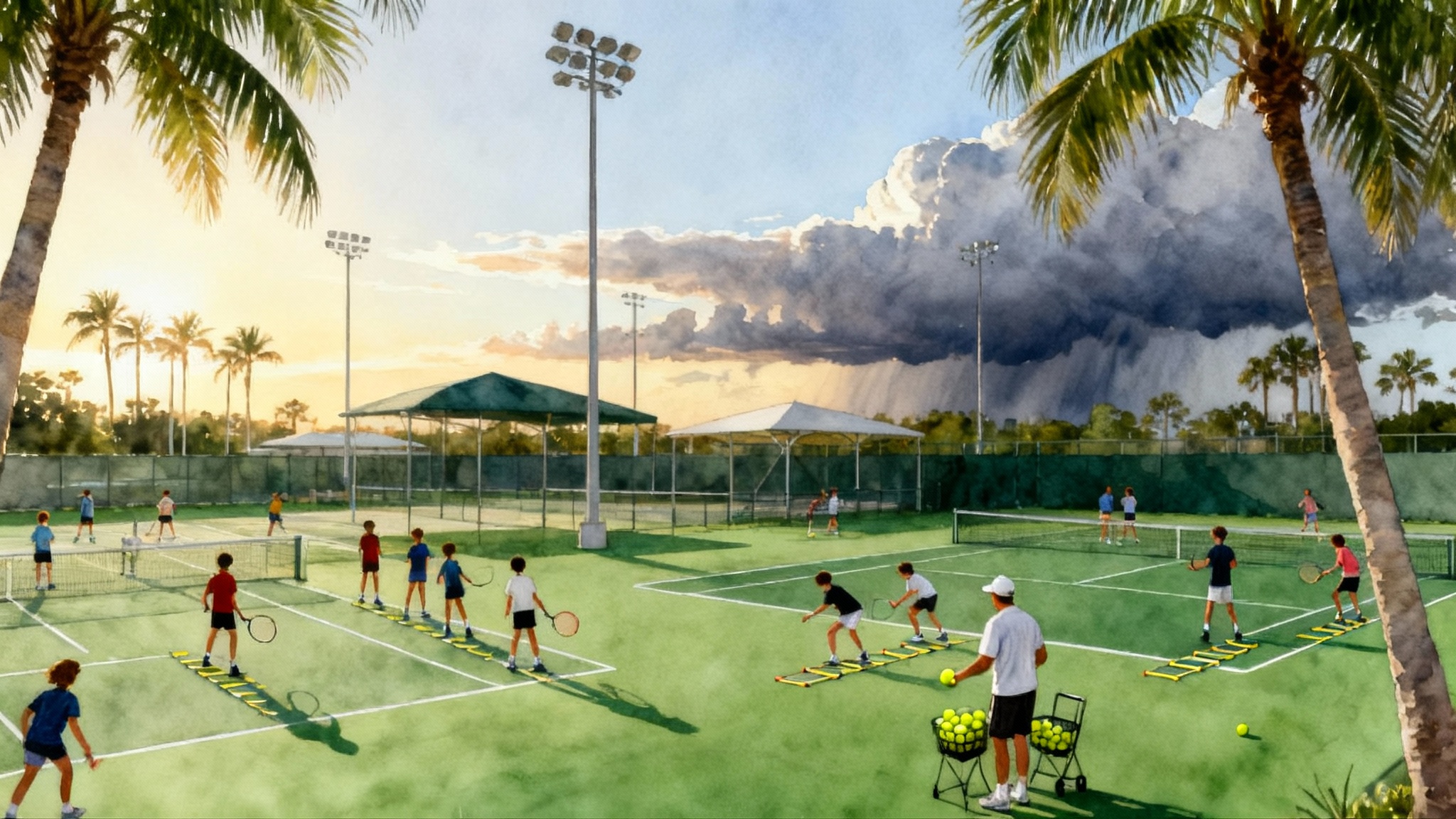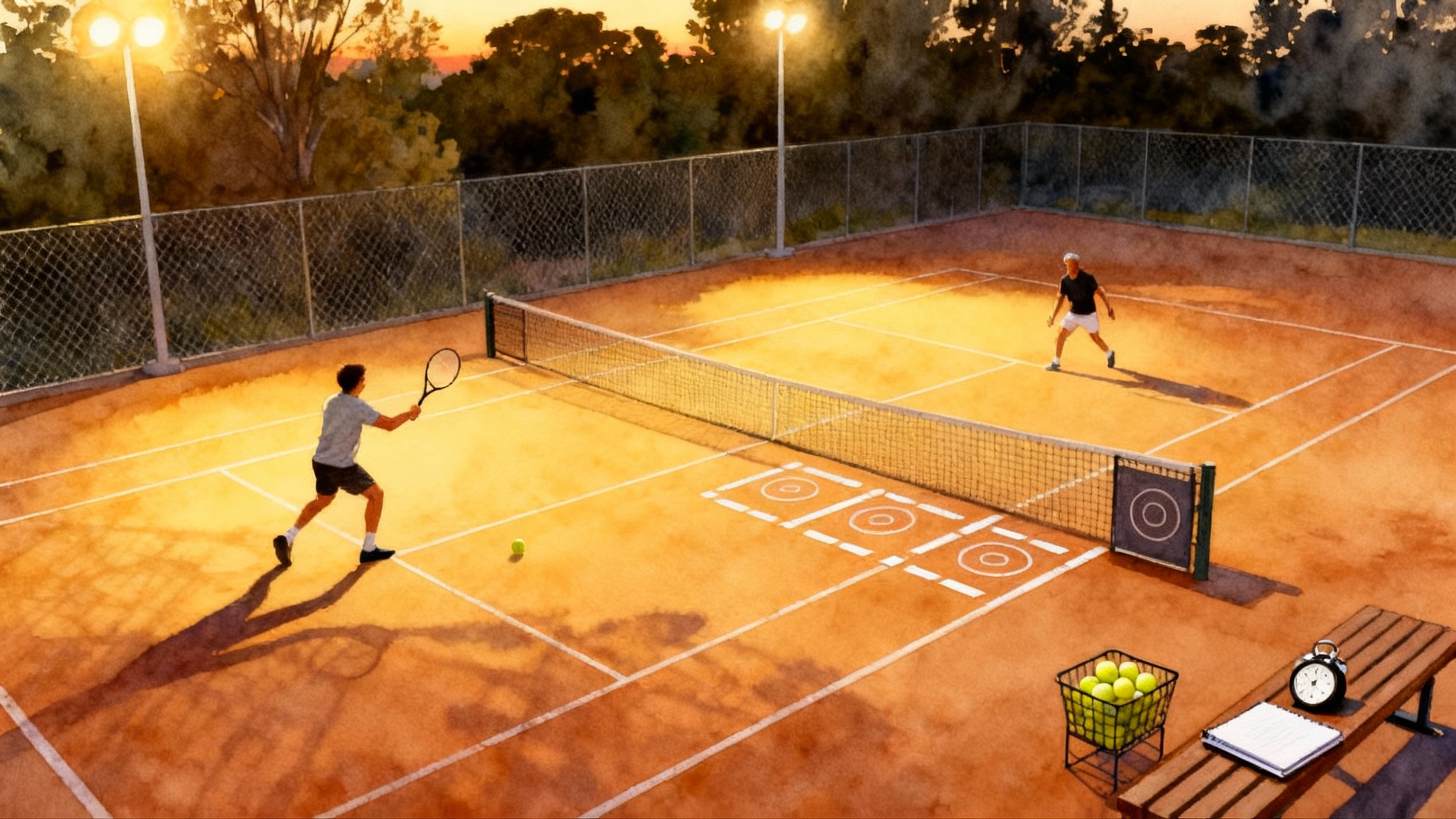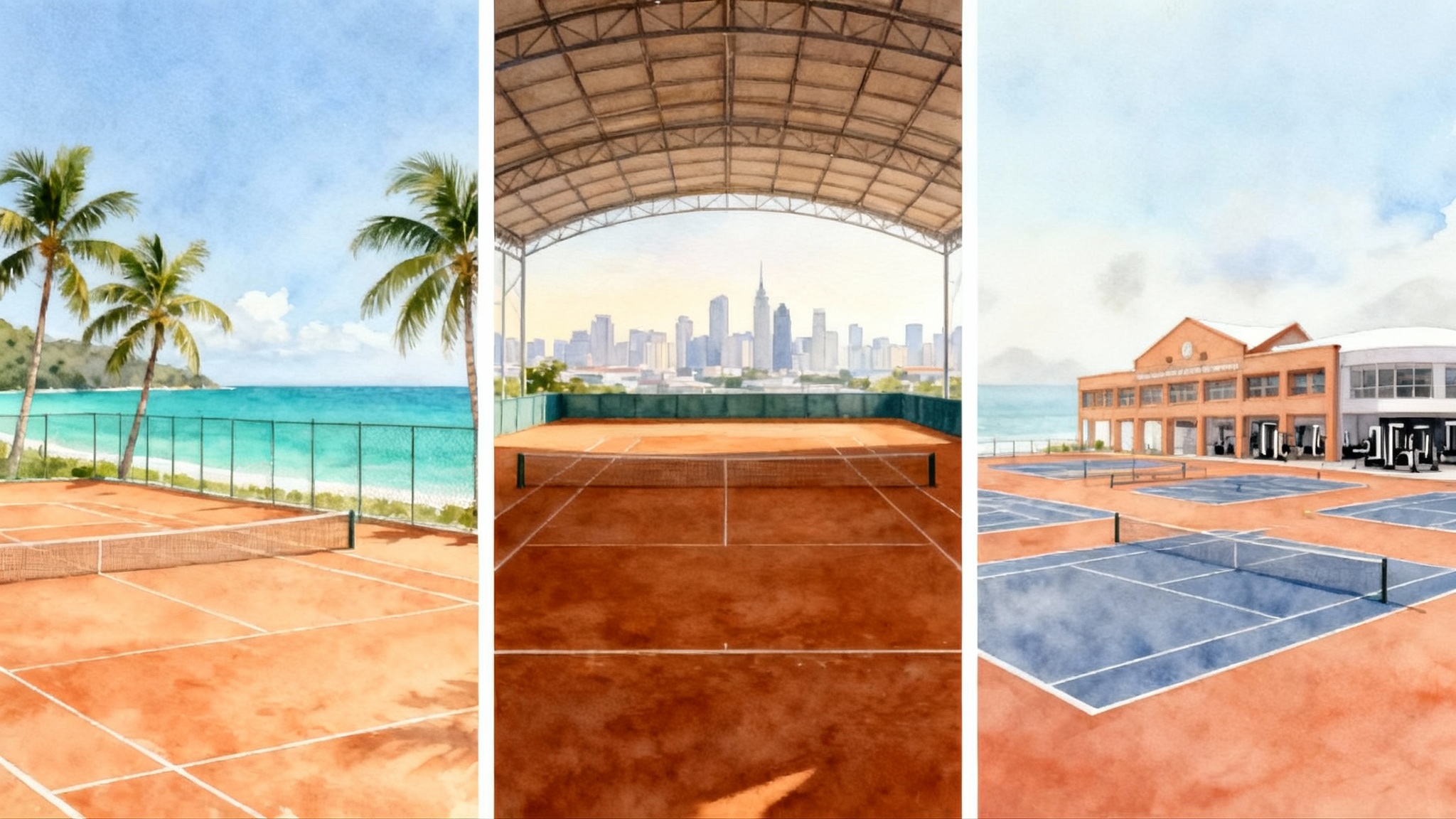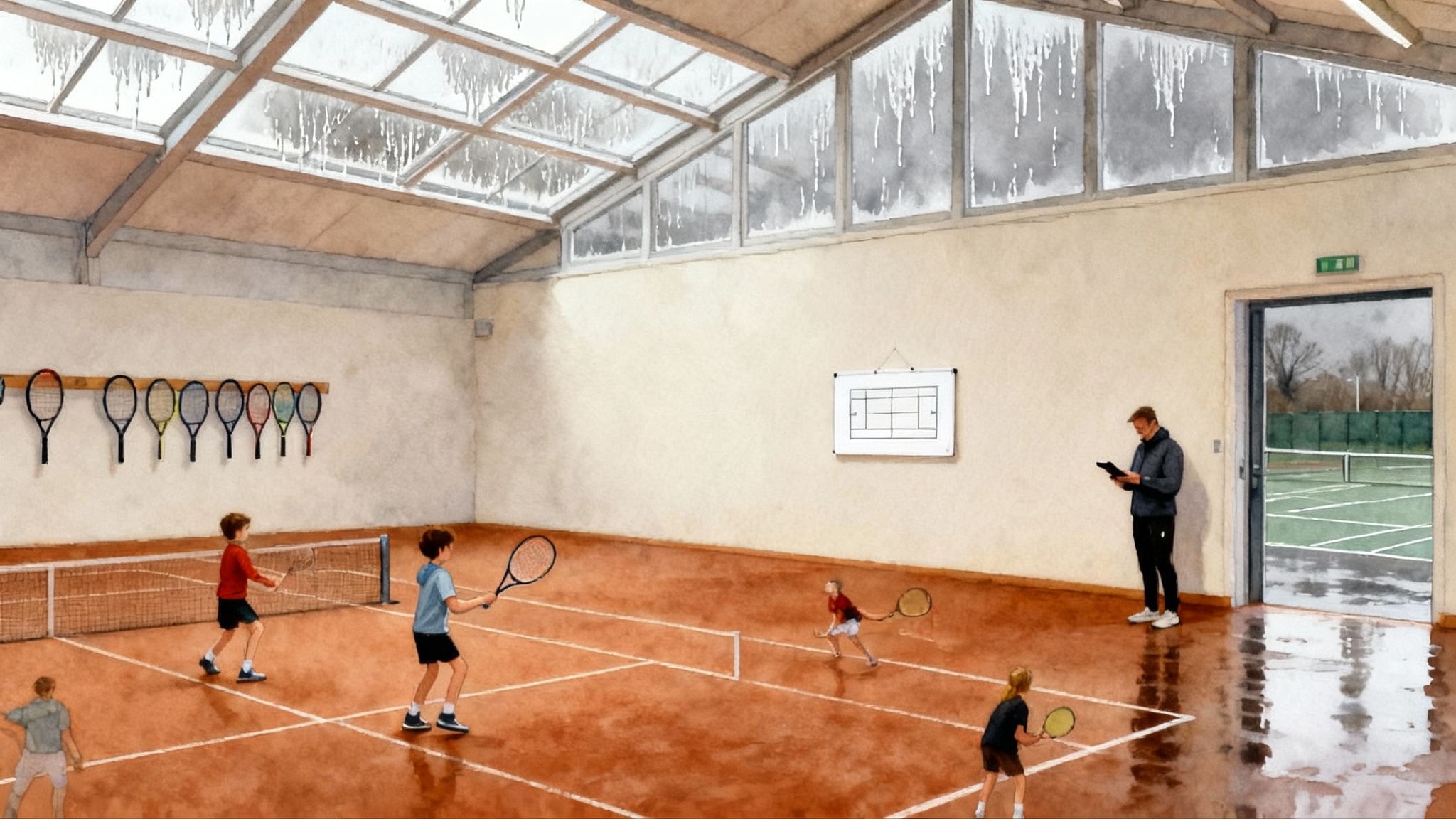Georgia Tennis Academies 2025–2026: Atlanta and North Georgia
A parent-first ranking of junior programs across Atlanta, Marietta, and North Georgia, comparing coaching ratios, court surfaces, verified UTR and ITF match access, academics and boarding, annual costs, and commute logistics.
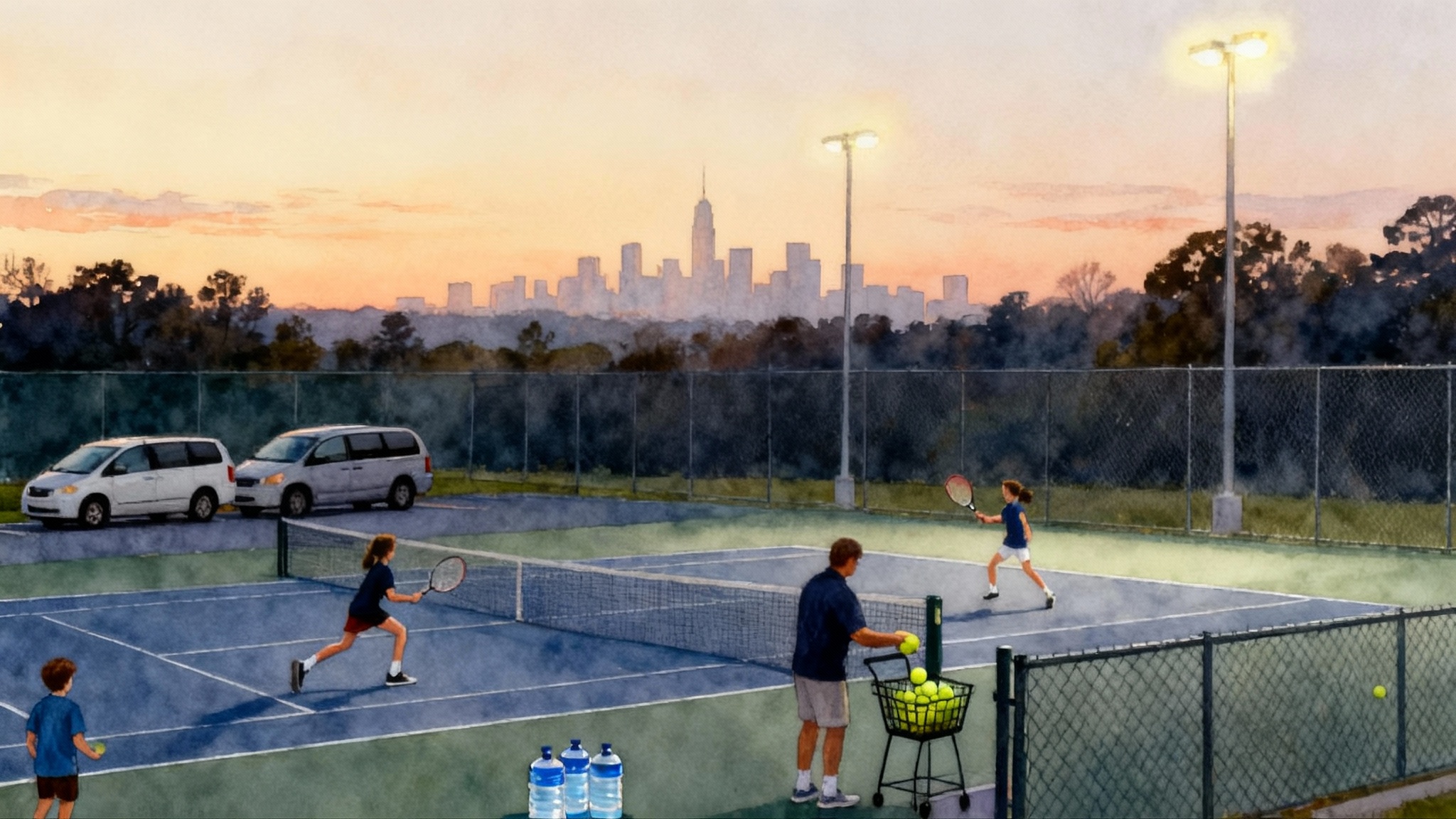
How to use this guide
Choosing a junior academy in Georgia is a high-stakes family decision. The right program shapes a teen’s training rhythm, school day, tournament calendar, and even your fuel budget along Interstate 75, Interstate 85, and Georgia 400. This parent-focused ranking covers the Atlanta metro, Marietta, and North Georgia for the 2025–2026 school year. We compare the programs that Georgia families ask about most on seven things that actually change outcomes: coaching ratios, clay versus hard-court volume, verified match access, academics and boarding, annual costs, college placement results, and commute logistics.
To keep this practical, each academy profile ends with actions to take on your tour or trial week. We also explain how to read placement claims and how to model your commute decision in minutes, not miles.
First definitions, since the acronyms matter:
- Universal Tennis Rating (UTR) is a global tennis rating system. Events that are “Verified” count reliably for player ratings and recruiting. If you are new to this, skim [how UTR Verified works](https://universantenni s.com) before you shortlist.
- International Tennis Federation (ITF) junior events are the entry point to international ranking points. You will find dates and locations on the ITF junior calendar.
Methodology we used
We examined public program descriptions, spoke with families who trained at multiple sites, and reviewed published schedules for 2024–2025 and director plans for 2025–2026 where available. We weighted the categories below. If your child’s needs are different, reweight accordingly.
- Coaching ratio and staff continuity: 30 percent
- Verified match access, in-house or nearby: 20 percent
- Surface mix that fits player goals: 10 percent
- Academics and optional boarding support: 10 percent
- College placement results and process quality: 20 percent
- Commute logistics, year-round: 10 percent
How to read the ranges that follow:
- Coaching ratio is the on-court coach-to-player average for high performance groups during school months. Expect boutique programs to target 1:3 to 1:5. Larger programs often run 1:6 to 1:8 in peak hours.
- Annual costs include after-school high performance blocks across ten months, plus a light summer, not counting private lessons. Expect private lessons to add 80 to 150 dollars per hour.
- Surface mix is the percentage of weekly hitting on clay versus hard courts, which matters for development and injury risk.
The 2025–2026 Georgia rankings
Below are the programs that rose to the top for most families. Every program here can produce strong players. The differences usually show up in how your teen trains on a Tuesday in February, not just at a showcase weekend in May.
1) Universal Tennis Academy High Performance, Atlanta
Best for: match-rich players who thrive in big-group energy and want frequent Verified events without constant travel.
Why it ranks here: Universal Tennis Academy, often shortened as UTA, runs multiple Atlanta sites with deep coaching benches and steady inflow of sparring partners. Families report reliable access to UTR Verified events most months, which reduces the travel burden during school.
- Coaching ratios and staff: 1:5 to 1:7 in peak blocks, tighter in morning or invite-only pods. Staff continuity is a strength and alumni often drop in as hitters.
- Surface mix: Heavily hard-court with selective clay sessions depending on location. Expect about 10 to 25 percent clay across the week if you request it.
- Verified match access: Frequent UTR Verified events on-site or within a short drive, which helps players stabilize ratings without long road trips.
- Academics and boarding: Day-program model. Families pair it with public or private school and, for national-track players, online options like Georgia Virtual School. No formal boarding, though some families arrange host housing during heavy tournament blocks.
- Annual costs: 8,000 to 14,000 dollars for the year. Add private lessons and tournament travel based on goals.
- College placement: Consistent Division I, Division II, and high-academic Division III placements with a structured recruiting process.
- Commute snapshot: Sites across the city reduce drive time. Choose a location that lines up with your school dismissal to avoid crossing through downtown at rush hour.
Tour checklist: Ask for the specific high performance block your teen would join, the expected coach on that court, and the next four UTR event dates. Watch one entire group session, footwork through point play.
2) Tennis Academy of the South, Sandy Springs
Best for: families wanting a technical foundation with a traditional academy structure in a central location.
Why it ranks here: Tennis Academy of the South, often abbreviated TAS, has long experience with technical progression for younger teens and a clear practice cadence that scales as players move up in level.
- Coaching ratios and staff: 1:4 to 1:6 in high performance groups, with specialty footwork blocks.
- Surface mix: Reliable access to both surfaces. Expect 20 to 40 percent weekly clay when requested, which is helpful for building patience and point construction.
- Verified match access: Solid calendar of UTR Verified opportunities plus scrimmages with nearby programs.
- Academics and boarding: Day-program model with strong relationships to local schools and flexible daytime pods for online learners.
- Annual costs: 9,000 to 15,000 dollars for the primary block across the year, with clear add-ons for fitness and tournament coaching.
- College placement: Good history of Division I and Division III placements with an emphasis on fit.
- Commute snapshot: Central to many neighborhoods. Traffic on Interstate 285 can add 15 to 25 minutes on rainy days. Build a small buffer.
Tour checklist: Ask how clay days are scheduled, whether match charting is used each week, and who handles recruiting videos.
3) ATi Tennis Academy, Marietta
Best for: boutique attention, lower coaching ratios, and a coach who will know your player’s weekly data by heart.
Why it ranks here: ATi Tennis Academy in Marietta is the archetype of a boutique high performance program. Families choose it for individualized periodization, truly small pods, and the kind of feedback loop that gets specific about patterns and shot selections.
- Coaching ratios and staff: 1:3 to 1:5 is typical, with directors hands-on for high performance blocks. That ratio is the program’s core value proposition.
- Surface mix: Mostly hard-court with optional clay days through partner facilities or nearby clubs.
- Verified match access: Regular participation in local UTR Verified events and planned travel blocks to cluster matches into efficient weekends.
- Academics and boarding: Day program. The academy coordinates well with online school schedules and exam weeks, and will shift training times for test days.
- Annual costs: 10,000 to 18,000 dollars depending on block length and how many private sessions are used for technical rebuilds.
- College placement: Boutique programs tend to punch above their size by tailoring recruiting timelines and communication.
- Commute snapshot: Convenient for families along Interstate 75 and the Marietta, East Cobb, Kennesaw corridor. Avoid crossing Interstate 285 at peak times when possible.
Tour checklist: Ask to see a sample training plan for a player like yours, the weekly video review cadence, and the next two months of match opportunities within an hour’s drive.
4) Windward Lake Club High Performance, Alpharetta
Best for: North Fulton families who want a strong club setting, access to clay, and minimal highway time.
Why it ranks here: Windward Lake Club’s environment blends club resources with a focused high performance block, a win for commuters who live nearby.
- Coaching ratios and staff: 1:5 to 1:7 with senior coaches present during key drilling hours.
- Surface mix: Balanced. Clay is available and used strategically for volume days in summer heat.
- Verified match access: Steady local UTR opportunities and well-coordinated scrimmages with neighboring academies.
- Academics and boarding: Day program with good support for school tennis conflicts in spring.
- Annual costs: 8,000 to 13,000 dollars for core programming. Club membership policies may affect access to courts and pricing; clarify this on your tour.
- College placement: Consistent placements at high-academic programs where character references matter.
- Commute snapshot: Excellent for Alpharetta, Johns Creek, Milton, and Cumming. Georgia 400 bottlenecks southbound after 3 p.m.; try earlier start blocks if possible.
Tour checklist: Ask how groups are split by UTR bands, how often match play replaces drilling, and whether fitness is included or outsourced.
5) Agape Tennis Academy High Performance, DeKalb
Best for: East side families who want a well-organized calendar and a community vibe that keeps younger teens engaged.
Why it ranks here: Agape pairs structured group blocks with a steady match calendar and brings a community energy that reduces burnout for 12 to 15 year olds.
- Coaching ratios and staff: 1:5 to 1:7, with strong assistant coach pipelines.
- Surface mix: Mostly hard-court with some clay depending on location and season.
- Verified match access: Regular UTR events and in-house match days keep progress visible.
- Academics and boarding: Day program with flexible options during exam weeks. Good fit for students who play school tennis.
- Annual costs: 7,000 to 12,000 dollars for the year’s primary block, plus add-ons for private work.
- College placement: Growing track record across Division II and Division III, especially for developing players in the 7 to 10 UTR range.
- Commute snapshot: Best for Decatur, Tucker, and east metro families. Cross-town commuters should test the drive at dismissal time before committing.
Tour checklist: Ask about the calendar of match days for the next six weeks, and how fitness sessions progress from pre-season to spring.
6) Life Time Peachtree Corners High Performance, Norcross
Best for: families who value indoor backup on rainy weeks and a one-stop facility with fitness, recovery, and courts in one place.
Why it ranks here: Life Time’s scale allows consistent schedules and weather flexibility. For players who lose momentum when rain cancels practice, indoor courts are a real advantage.
- Coaching ratios and staff: 1:6 to 1:8 at peak times, with opportunities to tighten in invite-only pods.
- Surface mix: Mostly hard-court. Limited clay access on-site. Players who need clay can schedule off-site sessions in the weekly plan.
- Verified match access: Frequent UTR events through the club network mean short drives and predictable calendars.
- Academics and boarding: Day program. The facility is well suited to online learners who can train early afternoons.
- Annual costs: 8,000 to 14,000 dollars depending on membership and program level. Private lessons and recovery add-ons are easy to schedule in one place.
- College placement: Solid placements that reflect strong video infrastructure and a professional environment for coach calls.
- Commute snapshot: Excellent for Norcross, Peachtree Corners, and Duluth. Interstate 285 traffic can be a factor for families driving from the west side.
Tour checklist: Ask about rain plans, guaranteed indoor hours, and how hitting groups are assigned across multiple courts.
7) North Georgia Tennis Academy, Cumming
Best for: families north of the Perimeter who want to trade daily highway time for more weekly touches on the ball.
Why it ranks here: For many Forsyth and Hall County families, the biggest unlock is not a name-brand academy. It is a consistent, nearby high performance block that your player never has to miss because traffic spiked.
- Coaching ratios and staff: 1:5 to 1:7, with directors visible on court.
- Surface mix: Mostly hard-court with some clay options in the network.
- Verified match access: Regular local UTR events plus coordinated travel to bigger draws when needed.
- Academics and boarding: Day program. Strong fit for public school schedules in the area.
- Annual costs: 6,000 to 10,000 dollars for core training, leaving budget headroom for private work.
- College placement: Focused support for players targeting Division II, Division III, and National Association of Intercollegiate Athletics rosters.
- Commute snapshot: Best for Cumming, Dawsonville, Gainesville, and surrounding communities. The real benefit is low drive variance.
Tour checklist: Ask how the program handles players who want to add clay volume, and how it clusters tournament travel to control costs.
Commute modeling you can do tonight
Miles are misleading in Atlanta. Use minutes. Do two quick tests:
- Day-of-week test: Drive the school-to-academy route on a Tuesday at your actual dismissal time. Repeat on a rainy day if you can. A 25 minute plan that turns into 45 minutes twice a week is a long season.
- Parent swap test: If you share carpool duty, time both directions for each driver and list backup routes. Build a plan for early release days and exam weeks.
Pro tip: If you pick a boutique program like ATi Tennis Academy, ask for an earlier or later pod to beat the worst of Interstate 75 congestion. If you pick a big program like Universal Tennis Academy, choose the site that keeps you on one highway for the fewest interchanges.
Clay versus hard-court in the Southeast
Clay teaches patience, balance, and point construction. Hard courts sharpen first-strike patterns and returns. For most Georgia juniors, a 20 to 40 percent clay week during growth spurts helps with movement and load management. In summer heat, clay can reduce lower-limb stress during long volume blocks. If college tennis is the target, make sure the academy can schedule blocks on both surfaces. Ask for the real percentage, not just whether clay exists on property.
If you are comparing nearby states, see our guides to Best Florida academies 2025–2026 and Best Texas academies 2025–2026 for context on travel blocks and clay access.
Questions to ask on the tour:
- How many hours this month will my player spend on clay if we request it
- When is clay used for drilling versus for live ball and sets
- What is the shoe and string plan for clay versus hard so we avoid blisters and premature string breakage
Reading college placement claims without the hype
Every academy lists college logos. Focus on three proof points.
- Placement fit by rating and academics: Ask for a list of the last two classes with each player’s graduating Universal Tennis Rating band and the college they joined. The right question is not how many Division I signings, but how many players hit their target band for level and academics.
- Process, not a single showcase: You want a recruiting checklist that starts in sophomore year with video, target lists, and coach conversations. A single fall showcase rarely moves the needle without that groundwork.
- Tournament calendar that matches your rating band: For example, a player at UTR 6 to 8 needs a different mix of local UTR events and regional draws than a UTR 10 to 12. Make sure your academy has a written plan.
As a rough guide, many women’s Division I rosters center around UTR bands 9 to 11, and many men’s Division I rosters around 11 to 13, with variation by conference and academics. Division III ranges are wide because academics and roster depth vary. Use these bands as a conversation starter, not a verdict.
What to budget for the year
Beyond the core program fee, plan for these line items:
- Private lessons: 80 to 150 dollars per hour. Assume one to two hours weekly during technical rebuilds, less during tournament-heavy months.
- Strength and mobility: 50 to 120 dollars per session if outsourced. Many programs include two or three sessions each week in the core fee. Confirm what is included.
- Tournament travel: 2,000 to 6,000 dollars if you stick to in-state and regional events. 6,000 to 12,000 dollars if you chase larger draws or add International Tennis Federation events.
- Stringing: 20 to 40 string jobs per year for a heavy hitter, which can total 600 to 1,600 dollars depending on string choice and who does the work.
Two sample paths that work
- Boutique path in Marietta: Join ATi Tennis Academy for the lower coaching ratio and a tailored plan. Layer in two local UTR events per month, plus one travel cluster every eight weeks. Keep a weekly clay day through a partner club to build movement. Pair with Georgia Virtual School for spring tournament windows.
- Big-program path in central Atlanta: Choose the Universal Tennis Academy site that fits your school commute. Use the in-house UTR Verified calendar to stabilize rating while protecting weekends. Add a Sunday clay block at a nearby site during the summer. Run a clear recruiting checklist starting in tenth grade.
Questions to bring to every tour
- What is the real coaching ratio in my player’s likely group on a random Tuesday in February
- How many Verified matches will my player get in the next eight weeks without leaving the metro area
- What percentage of weekly hitting can be on clay if we request it, and how will you schedule it
- Who owns recruiting videos and communication with college coaches, and what are the milestones by month
- If school tennis conflicts, how will you adjust training on match days
- What is your plan for my child’s next technical fix, and how many private hours will it take
Bottom line
For 2025–2026, Atlanta and its northern suburbs offer a rare combination of volume, variety, and verified competition. Universal Tennis Academy leads for match density across multiple sites. Tennis Academy of the South offers a technical home base with meaningful clay time. ATi Tennis Academy in Marietta stands out for boutique ratios and individualized planning. Windward Lake Club, Agape, Life Time Peachtree Corners, and North Georgia Tennis Academy round out a statewide picture where the best choice is the one you can drive to, four days a week, without stress.
Choose the program that makes a normal Tuesday in February productive. When the daily cadence is right, the rating follows, the recruiting emails feel manageable, and the family calendar still has room to breathe. That is how juniors thrive in Georgia.
